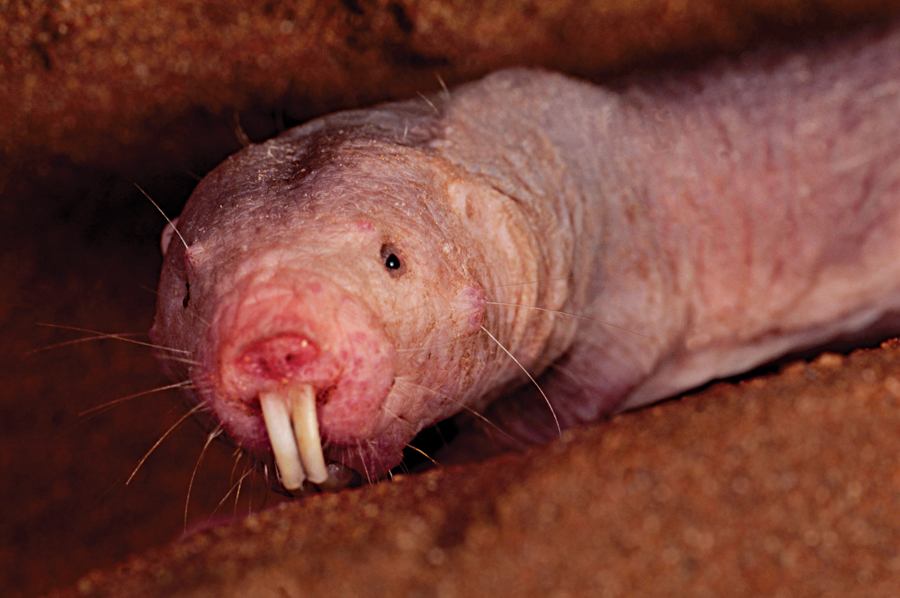Naked mole-rat is a burrowing rodent of East Africa known for its unusual appearance and social behavior. Its tubelike body is nearly hairless, with wrinkled pink skin. An adult may reach about 3 to 5 inches (8 to 13 centimeters) long and weigh 1 to 3 ounces (28 to 84 grams). The naked mole-rat spends its entire life underground. It lives in burrows with many tunnels and rooms. It digs using its strong jaws and sharp, chisellike front teeth.

The social behavior of naked mole-rats is like that of ants and honey bees. Naked mole-rats live in colonies that usually have about 75 to 80 members, though large colonies have up to 300 members. Only one female, called the queen, and one to three males breed. No other members of the colony breed. Instead, they work for the well-being of the colony. This form of social behavior is called eusociality. Only one other species of mammal, the Damaraland mole-rat, is known to be eusocial.

A naked mole-rat queen is larger than the other members of the colony. She usually bears 12 pups in a litter, though a litter may have as many as 28 pups. She can bear four to five litters and more than 100 pups in a year. She harasses (bullies) nonbreeding females and males. The harassment prevents them from breeding. If the queen dies, another female develops into a queen, grows larger, and begins to breed.
Nonbreeding naked mole-rats do a variety of work for the colony. This work includes caring for the young, maintaining tunnels, finding food, and attacking predators (hunting animals). Naked mole-rats feed mainly on tubers and other underground parts of plants. Smaller, younger workers do most of the maintenance work. Larger, older individuals work together to drive off snakes, as well as naked mole-rats from other colonies.
Naked mole-rats are unusual in many other ways. For example, their body temperature varies with the surrounding temperature more than that of any other mammal. Also, naked mole-rats can tolerate stagnant air, with high levels of carbon dioxide.
See also Mole-rat.
